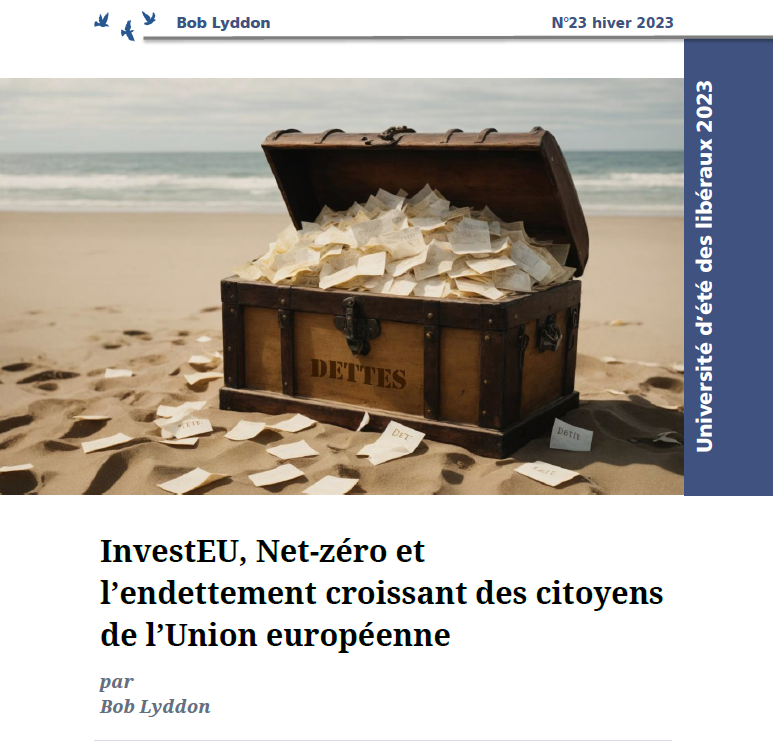This is the article that has been published in the Winter 2023/4 edition of the Journal des Libertés and which is based on my address to the IES-IREF Summer University in Aix-en-Provence.
You can download the full article here.
Its major topic is InvestEU, the scheme arranged by the European Investment Bank Group, the institution that has awarded itself the sobriquet of the ‘EU’s Climate Bank’.
Under that disguise it mounts a borrow-and-spend programme where, by 2027, up to €1 trillion will have been ‘invested’ in green projects that are almost entirely debt-funded.
Importantly, although the responsibility for servicing and repaying this debt will fall on EU citizens and businesses, the debt is not recorded within member states’ ‘General government gross debt’, the anchor figure for the Debt-to-GDP ratio and for compliance with the Fiscal Stability Pact (to reduce and keep member states’ Debt-to-GDP ratios to below 60%).
The first trick used is that the borrower-of-record is a privately-owned company, albeit one with hardly any capital and being 99% debt-funded. The debts of this company do not rank as public sector debt at all.
The second trick is that, although the raising of the debt would be impossible without the support of the European Investment Bank Group, the major portion of the debt does not appear in the accounts of the European Investment Bank Group. The European Investment Fund guarantees a portion of the debt, or else agrees to buy equity issued by the privately-owned company. The European Investment Fund thereby takes, through these off-balance-sheet devices, the highest risk in the project, but without lending any money itself.
The European Investment Bank does borrow-and-lend a modest slice of the project’s funding, and this slice ranks above the position of the European Investment Fund. This is the only amount that appears in any EU public accounts, on the balance sheet of the European Investment Bank.
The combined positions taken by the European Investment Bank and the European Investment Fund act instead of a proper amount of capital in the project, and this loss-absorbing, non-capital cushion enables the largest portion of the debt to be raised, which carries the lowest risk.
The scheme does not work without the European Investment Bank Group acting in place of genuine shareholders and taking the highest risk – which in turn means that EU citizens and businesses are put at high risk.
In fact EU citizens and businesses are the ultimate backstop for the scheme. One way or another they get to shoulder an increased financial burden: paying inflated charges for the products and services of these Green projects if the projects succeed, or paying back the European Investment Bank Group for its losses if the projects fail. Heads I win, tails you lose.
Some contribution may or may not be made to the achievement of Net Zero, which may turn out to have been needed or not.
Hundreds of EU bureaucrats can be employed in churning money around. These bureaucrats can congratulate themselves they are doing good.
The senior executives of the European Investment Bank Group can travel in luxury to the COP meetings, to World Bank summits, the World Economic Forum, IMF meetings, meetings with member state government officials and so on, preening and congratulating themselves and one another in a nauseating mutual mirroring exercise, whilst the ultimate debtors of the scheme – EU citizens and businesses – never need to be consulted.

